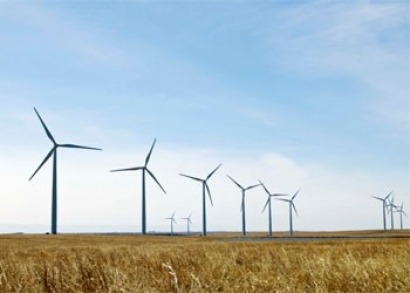
The UK has the best wind resource in Europe, both on and offshore. This is recognised by the UK government, which has stated its intention for the UK to become “the Saudi Arabia of the renewables world”. However, if recent media reports are true, there would appear to be a high level of scepticism around the true benefits of wind power. I welcome an open and honest debate on the subject, but believe that this should be based on fact.
The high cost of wind power generation is highlighted as a key contributor to rising electricity bills, but this is a fallacy. The truth is wind only accounts for 1% of average household fuel bills(1). The overall cost of wind power generation is falling all the time, as new technologies are developed to improve efficiency. A single onshore wind turbine can now produce more power than ten of the type first installed in the UK. And the industry is doing all it can to cut costs. At REpower, we have already reduced material costs of one of our best-selling turbine models, the MM92, by 25% over the last 3-4 years.
Wind energy may be subsidised, but the Department of Energy and Climate Change (DECC) has already started the process of cutting funding to the offshore and onshore wind sectors by reducing the value of Renewable Obligation Certificates. In addition, the Government has released figures showing that wind power will help slash future consumer bills by nearly £100 compared to largely relying on non-renewable sources(2).
At the same time, fossil fuel prices are on the up – as far as cost efficiency is concerned, according to Bloomberg(3), the two could achieve parity as soon as 2016. The same report states that the best wind farms in the world already produce power as economically as coal, gas and nuclear generators. In the case of nuclear, the decommissioning costs alone far exceed the cost per MW of a wind installation.
When it comes to offshore wind, the ideal conditions around the UK mean that sea-based wind power could supply more than enough energy for the country. It is new technology so costs are currently high compared to onshore wind, but the government has formed an industry-led task force that will reduce development, construction and operational costs of offshore wind to £100/MWh by 2020(4). As with any new technology, costs will fall steeply as the industry gains experience and achieves economies of scale with the large Round 3 projects expected to be built from 2015 onwards.
Another argument used against wind energy relates to the level of back-up capacity required. Wind turbines generate electricity 80-85% of the time, allowing us to use the power of the weather when it's available to cut the quantities of fossil fuels we need to burn to generate our electricity. This is the basis upon which the financial model of wind operates. It is not true that backup sources need to be kept constantly spinning, as wind can be predicted with reasonable accuracy a few hours in advance in order to bring alternative sources online.
There has been criticism recently about wind farms being shut down during periods of over-production. Balancing electricity supply and demand by reducing output from power stations is a feature of any grid, and always has been. In the UK we typically require 50% more supply at 4pm than at 4am, and there are peaks and troughs throughout the day. The fact that wind farms are now part of this balancing mechanism is a sign of the industry maturing, and of the versatility of wind farms. It is easier, and cheaper, to shut down a wind farm during a few hours of low demand, than to shut down a nuclear power station for a few hours. The challenge we face today is less intermittency and rather connectivity.
Excellent wind conditions in the UK mean that, statistically, wind is usually blowing somewhere in the country. A modern grid system is the key to ensuring that wind resource is used to its maximum effect, so that power produced in regions that have wind can easily be supplied to those areas that don’t. The European Supergrid will be the ultimate solution, distributing power from renewable energy sources across continents.
Research by the German government(5) into the scenario of 100% energy supply from renewables in Europe by 2050 found that only Denmark can produce renewable energy cheaper than the UK. But nobody is claiming that wind is the only answer to our future energy supply; it’s just part of the solution. Wind can deliver the power balance we need in a cost effective and climate neutral fashion. And let’s not forget the other benefit that the renewable industry can bring to the UK: green jobs – up to 90,000 of them by 2020 in the wind, wave and tidal sector and its supply chain. Something the UK needs in the harsh economic environment of today. Notes:
1. The support mechanism for large-scale renewables, the Renewables Obligation, adds about £17 onto an average energy bill of £1260 (http://www.decc.gov.uk/assets/decc/11/about-us/economics-social-research/3593-estimated-impacts-of-our-policies-on-energy-prices.pdf , page 62). In the financial year 2009-10 onshore and offshore wind represented 47% of this cost (http://www.ofgem.gov.uk/Sustainability/Environment/RenewablObl/Documents1/RO%20Annual%20Report%202009-10.pdf ).
2. DECC Annual Energy Statement
3. Onshore wind energy to reach parity with fossil-fuel electricity by 2016
5. Article in Handelsblatt, 8/12/2011. Research carried out by German government advisory body
For additional information:

